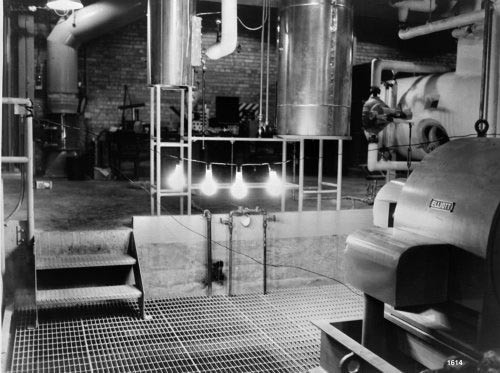Americana: Idaho
23 Sep - 11 Oct 2008
AMERICANA: IDAHO
Mary Augustine Gallery
Sept. 23–Oct. 11, 2008
An illuminated light bulb has come to symbolize a brilliant thought, while the object itself represents a technological triumph and engineering success born of human ingenuity. In Arco, Idaho in 1951, at the atomic research laboratory dubbed Experimental-Breeder-Reactor-1, the flash of a light bulb changed the course of history when a team of scientists identified nuclear power for the first time. The success of their experiment and the energy that it harnessed caused the illumination of four light bulbs and signaled the beginning of a great potential energy source for the entire global community. Overnight, nuclear power was seen as the solution to providing our rapidly evolving industrial civilization with an efficient power grid that would not drain the planet's limited energy resources.
This tremendous technological breakthrough has, arguably, also introduced the greatest threat to the health of our species and our environment. Although nuclear energy is ecologically sound when it functions properly, we have yet to develop the infrastructure to support secure nuclear energy production or a safe way to contain toxic nuclear waste. Populations surrounding nuclear plants experience abnormally high cancer rates and, given the long-term effects, communities will suffer for generations to come.
Within a few years of the discovery in Arco, Idaho, the neighboring town of Idaho Falls became the first to be fueled by nuclear power. In 1961, the Idaho Falls power plant was the site of the first core-reactor meltdown, which killed three people and continues to contaminate the surrounding environment. If new alternative energy sources are not found and in the face of current rapid climate change, we will soon be forced to turn to nuclear power as an alternative to petroleum-based energy sources, but can we afford to ignore the facts of our nuclear past?
The exhibition Americana: Idaho illustrates the proliferation of nuclear power plants across the United States with a bulb representing each plant, as well as sites for projected power plants, and a unique bulb for the original plant, EBR-1, in Arco, Idaho. The smaller vitrine contains a chalkboard with reproductions of the signatures of the scientists who were responsible for the first successful nuclear breeding experiment.
Robin Carlson
Mary Augustine Gallery
Sept. 23–Oct. 11, 2008
An illuminated light bulb has come to symbolize a brilliant thought, while the object itself represents a technological triumph and engineering success born of human ingenuity. In Arco, Idaho in 1951, at the atomic research laboratory dubbed Experimental-Breeder-Reactor-1, the flash of a light bulb changed the course of history when a team of scientists identified nuclear power for the first time. The success of their experiment and the energy that it harnessed caused the illumination of four light bulbs and signaled the beginning of a great potential energy source for the entire global community. Overnight, nuclear power was seen as the solution to providing our rapidly evolving industrial civilization with an efficient power grid that would not drain the planet's limited energy resources.
This tremendous technological breakthrough has, arguably, also introduced the greatest threat to the health of our species and our environment. Although nuclear energy is ecologically sound when it functions properly, we have yet to develop the infrastructure to support secure nuclear energy production or a safe way to contain toxic nuclear waste. Populations surrounding nuclear plants experience abnormally high cancer rates and, given the long-term effects, communities will suffer for generations to come.
Within a few years of the discovery in Arco, Idaho, the neighboring town of Idaho Falls became the first to be fueled by nuclear power. In 1961, the Idaho Falls power plant was the site of the first core-reactor meltdown, which killed three people and continues to contaminate the surrounding environment. If new alternative energy sources are not found and in the face of current rapid climate change, we will soon be forced to turn to nuclear power as an alternative to petroleum-based energy sources, but can we afford to ignore the facts of our nuclear past?
The exhibition Americana: Idaho illustrates the proliferation of nuclear power plants across the United States with a bulb representing each plant, as well as sites for projected power plants, and a unique bulb for the original plant, EBR-1, in Arco, Idaho. The smaller vitrine contains a chalkboard with reproductions of the signatures of the scientists who were responsible for the first successful nuclear breeding experiment.
Robin Carlson

